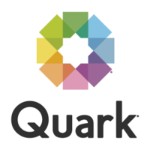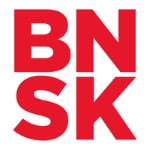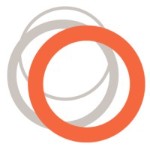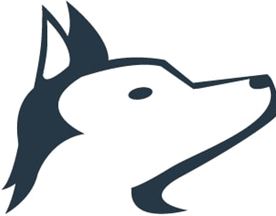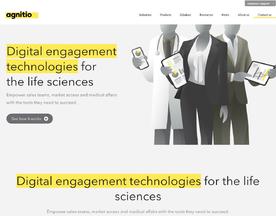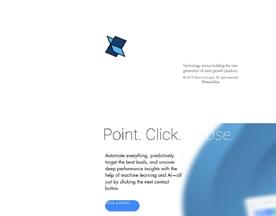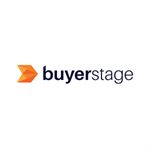What is a spiff? A spiff is a bonus or incentive offered to motivate salespeople or employees, typically in the form of cash or prizes.
What is a spiff, also known as a sales performance incentive fund, is a type of sales incentive program that rewards salespeople for meeting specific goals or targets. These incentives can take many forms, including cash bonuses, gift cards, merchandise, or even trips. SPIFFs are often used to motivate sales teams to sell more, increase revenue, and improve overall performance.

Understanding what is a SPIFF is important for both salespeople and managers, as they can be a powerful tool for driving sales and improving business results. The purpose and benefits of SPIFF programs are clear: they incentivize salespeople to sell more, which can lead to increased revenue and profits for the company. Implementing SPIFF programs requires careful planning and execution, including setting clear goals and targets, selecting appropriate rewards, and tracking performance to ensure that incentives are being earned and paid out correctly.
Key Takeaways
- SPIFFs are a type of sales incentive program that rewards salespeople for meeting specific goals or targets
- SPIFFs are used to motivate sales teams to sell more, increase revenue, and improve overall performance
- Implementing SPIFF programs requires careful planning and execution, including setting clear goals and targets, selecting appropriate rewards, and tracking performance.
Understanding What Is a SPIFF
Definition and Origin
What is a SPIFF, short for “Special Performance Incentive for Field Force,” is a type of sales incentive program that rewards sales representatives for selling specific products or services. The term SPIFF has been in use since the early 20th century and is now a common term used in the sales industry.
According to the Oxford English Dictionary, the word “spiff” originated in the 1850s as a slang term meaning “a well-dressed man.” The term was later adapted to refer to a bonus or commission paid to salespeople for selling certain products.
SPIFF vs. SPIF
While SPIFF and SPIF (Special Performance Incentive Fund) are often used interchangeably, there is a slight difference between the two. A SPIFF is a one-time bonus paid to sales representatives for selling a specific product or service, while a SPIF is an ongoing incentive program that rewards sales representatives for meeting certain performance metrics.
SPIFFs are typically used to motivate sales representatives to sell specific products or services that may be more difficult to sell than others. For example, a company may offer a SPIFF to sales representatives who sell a new product that has just been released.
In contrast, a SPIF is used to encourage sales representatives to perform at a high level consistently. Sales representatives who meet certain performance metrics, such as exceeding their sales quota or achieving a high customer satisfaction rating, may be eligible for a SPIF.
Overall, SPIFFs and SPIFs are effective tools for motivating sales representatives and driving sales performance. By offering incentives for specific behaviors or outcomes, companies can encourage their sales teams to focus on the most important products or services and achieve their goals.
Here is an external resource with more information on what is a SPIFF.
Purpose and Benefits
Spiffs, or sales performance incentive funds, are a popular way to motivate sales teams and boost sales performance. They are short-term sales incentives that provide rewards for meeting specific goals or targets. Spiffs can take many forms, such as cash bonuses, gift cards, prizes, or recognition.
Boosting Sales Performance
One of the main purposes of spiffs is to boost sales performance. By offering a reward for meeting specific goals or targets, sales teams are motivated to work harder and perform better. This can lead to increased sales, higher revenue, and greater profitability for the company.
Motivation and Morale
Spiffs can also improve motivation and morale among sales teams. When salespeople feel recognized and rewarded for their hard work, they are more likely to feel motivated and engaged in their work. This can lead to higher job satisfaction and lower turnover rates.
Short-Term Sales Incentives
Spiffs are designed to be short-term sales incentives, meaning that they are offered for a limited time period. This creates a sense of urgency and healthy competition among sales teams, as they strive to meet the goals or targets in order to receive the reward.
Including spiffs as part of a sales incentive program can have many benefits for a company. They can boost sales performance, improve motivation and morale, and provide short-term sales incentives. By offering rewards for meeting specific goals or targets, sales teams are motivated to work harder and perform better. To learn more about what is a spiff, check out this article from Sales Hacker.
Implementing SPIFF Programs

Implementing a successful SPIFF program requires careful planning and execution. Companies need to set clear objectives and targets, choose the right incentives, and design a program structure that promotes transparency and fairness.
Setting Objectives and Targets
The first step in implementing a SPIFF program is to define clear objectives and targets. These should be aligned with the company’s overall sales strategy and should be specific, measurable, and achievable. Objectives might include increasing sales of a particular product line, boosting revenue in a specific region, or improving customer retention rates.
To set effective targets, companies should analyze their historical sales data and market trends. This will help them identify realistic goals and benchmarks. It’s also important to communicate these targets clearly to sales reps, so they understand what they need to achieve to earn incentives.
Choosing the Right Incentives
The incentives offered through a SPIFF program should motivate sales reps to achieve the defined objectives and targets. Incentives might include cash bonuses, gift cards, vacations, or other rewards. It’s important to choose incentives that are meaningful to sales reps and that align with the company’s budget and goals.
Companies should also consider the timing and frequency of incentives. Offering incentives on a regular basis, such as monthly or quarterly, can help maintain motivation and momentum. Additionally, companies should ensure that incentives are achievable and that sales reps have a clear understanding of what they need to do to earn them.
Program Structure and Transparency
The structure of a SPIFF program should be designed to promote transparency and fairness. Companies should clearly communicate the program’s rules and requirements to sales reps, including how incentives are calculated and paid out. It’s also important to ensure that the program is administered fairly and consistently across all sales reps.
To promote transparency, companies might consider using a leaderboard or other tracking system to show sales reps how they are performing relative to their peers. This can help create a sense of healthy competition and motivate reps to work harder.
Finally, it’s important to regularly review and evaluate the SPIFF program to ensure that it remains effective and aligned with the company’s goals. Companies might consider soliciting feedback from sales reps to identify areas for improvement.
For more information on implementing SPIFF programs and what is a SPIFF, check out this article from Salesforce.
Types of SPIFF Rewards
Sales Performance Incentive Funds (SPIFFs) are a popular way for companies to motivate their sales teams to achieve specific goals. SPIFFs can come in many forms, including cash, non-cash incentives, prizes, and recognition. Here are some of the different types of SPIFF rewards:
Cash and Non-Cash Incentives
Cash incentives are the most straightforward type of SPIFF reward. They can be a one-time bonus or a percentage of the sale, depending on the company’s policies. Non-cash incentives are also popular, as they can be more creative and memorable than cash. Examples of non-cash incentives include gift cards, travel vouchers, and merchandise.
One of the benefits of non-cash incentives is that they can be more personalized to the individual salesperson. For example, a salesperson who loves golf might appreciate a gift card to a local golf course, while someone who is a foodie might prefer a restaurant gift card.
Prizes and Recognition
Prizes are another popular type of SPIFF reward. They can range from small items like branded merchandise to larger rewards like electronics or even cars. The key is to offer prizes that are meaningful to the sales team and will motivate them to work harder.
Recognition is also an important part of SPIFFs. Salespeople want to feel appreciated for their hard work, and recognition can go a long way toward boosting morale. This can include public recognition in front of the team or the company, as well as private recognition from managers and supervisors.
Overall, there are many different types of SPIFF rewards that companies can offer to motivate their sales teams. By choosing the right incentives and rewards, companies can encourage their salespeople to work harder and achieve their goals.
Here is a resource with more information on what is a SPIFF and how to implement them effectively.
Managing and Tracking SPIFFs

SPIFFs are an effective way to motivate sales teams and drive revenue growth. However, managing and tracking SPIFFs can be a challenging task. In this section, we will discuss the best practices for managing and tracking SPIFFs to ensure their effectiveness.
Effective Measurement
Measuring the effectiveness of SPIFFs is crucial to ensure that they are achieving their intended objectives. Sales managers should track the following metrics to measure the success of SPIFFs:
- Sales revenue: SPIFFs should result in an increase in sales revenue. Sales managers should track the revenue generated during the SPIFF period and compare it to the revenue generated in the same period without SPIFFs.
- Productivity: SPIFFs should motivate sales reps to sell more. Sales managers should track the number of sales made by each sales rep during the SPIFF period and compare it to the number of sales made in the same period without SPIFFs.
- Visibility: SPIFFs should increase the visibility of certain products or services. Sales managers should track the sales of the targeted products or services during the SPIFF period and compare it to the sales of the same products or services in the same period without SPIFFs.
By measuring these metrics, sales managers can determine the effectiveness of what is a SPIFF and make necessary adjustments to ensure their success.
Software Solutions for Tracking
Tracking SPIFFs manually can be a daunting task. Sales managers can use software solutions to automate the tracking process. Some of the benefits of using software solutions for tracking SPIFFs include:
- Accuracy: Software solutions eliminate the risk of human error in tracking SPIFFs.
- Efficiency: Software solutions automate the tracking process, saving time and increasing productivity.
- Visibility: Software solutions provide real-time visibility into the progress of SPIFFs, enabling sales managers to make necessary adjustments.
There are many software solutions available for tracking SPIFFs. Sales managers should choose a software solution that meets their specific needs and integrates with their existing sales management tools.
In conclusion, managing and tracking SPIFFs is essential to ensure their effectiveness. By measuring the right metrics and using software solutions for tracking, sales managers can motivate their sales teams and drive revenue growth. For more information on what is a SPIFF, check out this external resource.
Challenges and Considerations

Avoiding Toxic Work Environments
One challenge that arises with implementing a spiff program is the potential for creating a toxic work environment. This can occur when the program is not structured properly or when there is a lack of transparency in how rewards are distributed. Employees may feel pressured to compete with each other in unhealthy ways, leading to resentment and a breakdown in teamwork.
To avoid this, it is important to establish clear guidelines and criteria for earning spiffs. This should include a fair and objective way of measuring performance, as well as regular communication and feedback to ensure that everyone understands the program and their role in it. Additionally, it is important to foster a culture of collaboration rather than competition, where employees feel supported and encouraged to work together towards shared goals.
Ensuring Fairness and Eligibility
Another consideration when implementing a spiff program is ensuring fairness and eligibility. It is important to establish clear and consistent criteria for who is eligible to earn rewards, and to ensure that everyone has an equal opportunity to participate. This can be challenging when dealing with a large and diverse workforce, but it is essential for maintaining employee morale and engagement.
To address this, companies may consider implementing a tiered system where rewards are based on different levels of performance or tenure. This can help to ensure that everyone has a chance to earn rewards, regardless of their position or experience. Additionally, it is important to regularly review and update the program to ensure that it remains relevant and effective in motivating employees to perform at their best.
Overall, while spiff programs can be a powerful tool for motivating employees and driving sales, they also come with their own set of challenges and considerations. By taking a thoughtful and strategic approach to implementation, companies can avoid potential pitfalls and create a program that is both fair and effective. For more information on what is a spiff programs and how to implement them successfully, check out this resource from Harvard Business Review.
SPIFFs in Practice

Real-World Examples
SPIFFs, or Short-Term Performance Incentive Funds, have been used by sales teams for decades to motivate sales reps to achieve specific sales goals. Sales teams use SPIFFs to incentivize their salespeople to sell specific products, meet sales quotas, and achieve other specific goals. SPIFFs are a short-term incentive that provides an immediate reward to sales reps for their efforts.
One real-world example of SPIFFs in practice is when a company introduces a new product or service. Sales teams often use SPIFFs to motivate sales reps to sell the new product or service. This can be an effective way to drive growth and increase revenue. For example, a company that sells software might offer a SPIFF to sales reps who sell a certain number of licenses for a new software program.
Another example of SPIFFs in practice is when sales teams use them to reward sales reps who achieve specific goals. For example, a company might offer a SPIFF to sales reps who achieve a certain percentage increase in sales over a specific period. This can be an effective way to motivate sales reps to work harder and achieve specific sales goals.
Case Studies on SPIFF Effectiveness
There have been many case studies on the effectiveness of SPIFFs. According to a study by the Pall Mall Gazette, SPIFFs can be an effective way to motivate salespeople and increase sales. The study found that sales teams that used SPIFFs saw an increase in sales of up to 30%.
Another study by the Harvard Business Review found that SPIFFs can be an effective way to motivate sales reps to sell specific products. The study found that sales reps who were offered a SPIFF for selling a specific product were more likely to sell that product than sales reps who were not offered a SPIFF.
Sales managers can use SPIFFs as part of their sales incentive strategies to motivate their sales representatives to achieve specific goals. By offering short-term incentives that provide immediate rewards, sales teams can drive growth and increase revenue. SPIFFs can be an effective way to incentivize sales reps to sell specific products, achieve specific sales goals, and work harder to achieve their sales quotas.
For more information on what is a SPIFF and their effectiveness in sales incentive strategies, check out this link from Salesforce, a high-authority resource on sales and marketing.
Frequently Asked Questions

How do SPIFFs function in a sales environment?
SPIFFs, or Sales Performance Incentive Funds, are bonuses given to salespeople for meeting specific goals or selling certain products. These bonuses are typically used as a way to motivate sales staff and increase sales of particular products or services.
What constitutes a spiff payment?
A spiff payment can take many forms, such as a cash bonus, gift card, or merchandise. The payment is usually based on a percentage of the sale or a flat rate for meeting a specific goal.
In what ways are SPIFFs utilized in the automotive sales industry?
In the automotive industry, SPIFFs are often used to incentivize salespeople to sell certain models or brands of vehicles. For example, a dealership may offer a bonus to sales staff for selling a certain number of a particular model of car.
What are the legal considerations surrounding SPIFF programs?
While SPIFF programs can be effective in motivating sales staff, there are legal considerations that must be taken into account. For example, SPIFF programs must comply with labor laws and cannot be used to discriminate against certain employees.
How does a spiff bonus differ from a regular sales commission?
A spiff bonus is a one-time payment that is typically based on meeting a specific goal or selling a particular product. In contrast, a regular sales commission is a percentage of the sale that is paid to the salesperson on an ongoing basis.
What is the origin of the term ‘SPIFF’ in the context of sales incentives?
The origin of the term ‘SPIFF’ is uncertain, but it is believed to have originated in the early 20th century in the United States. According to some sources, the term may be an acronym for “Special Performance Incentive for Field Force.”
For more information on what is a SPIFF and how they function in a sales environment, check out this article from Salesforce, a leading provider of sales software and solutions.


